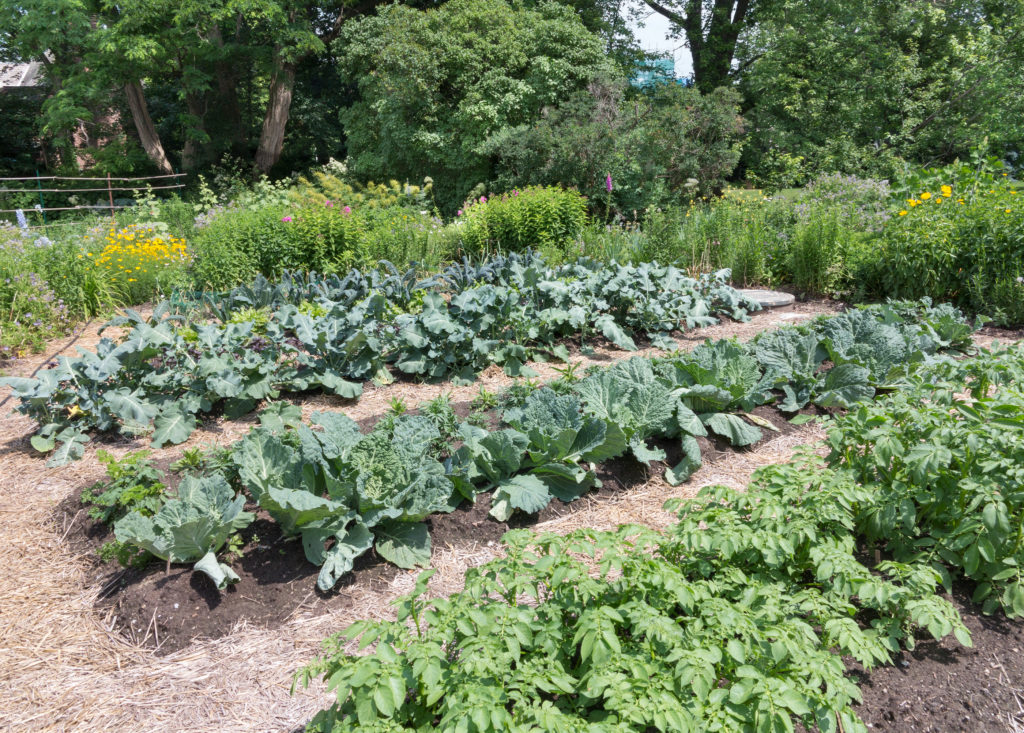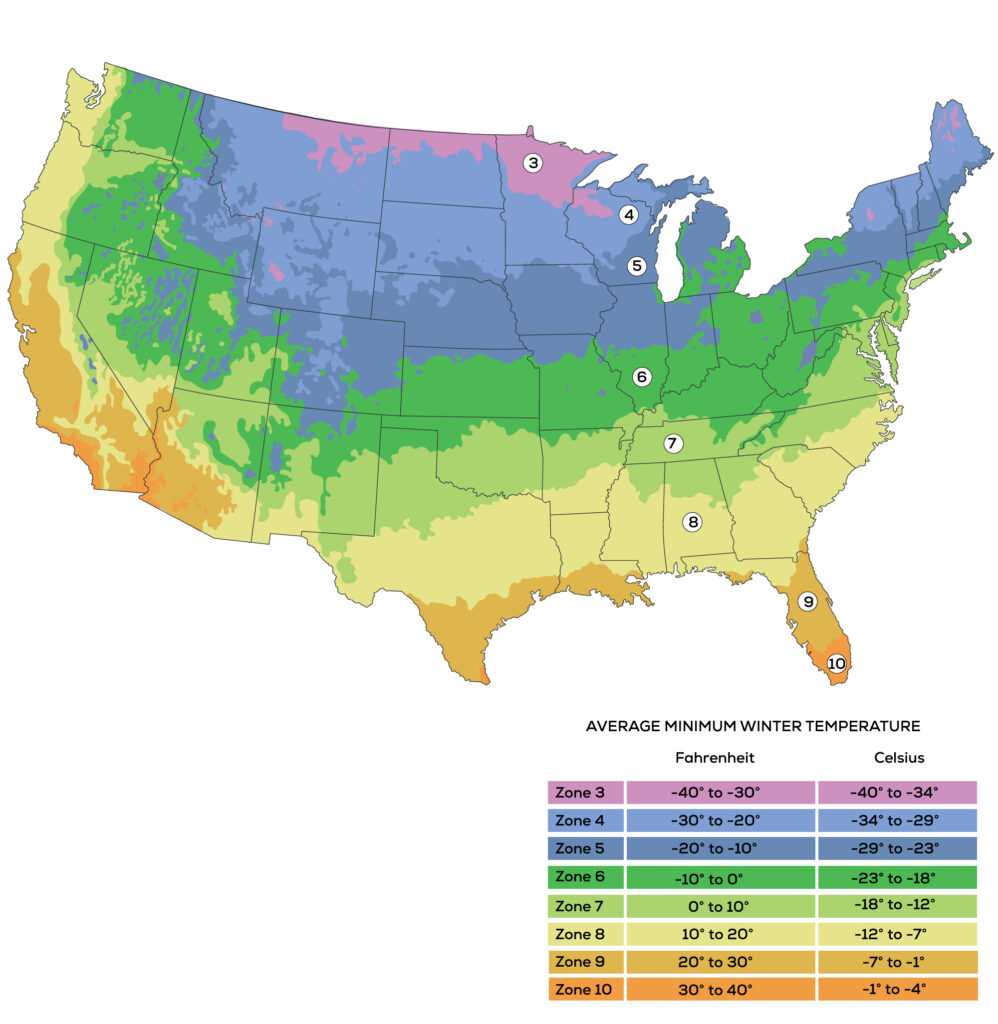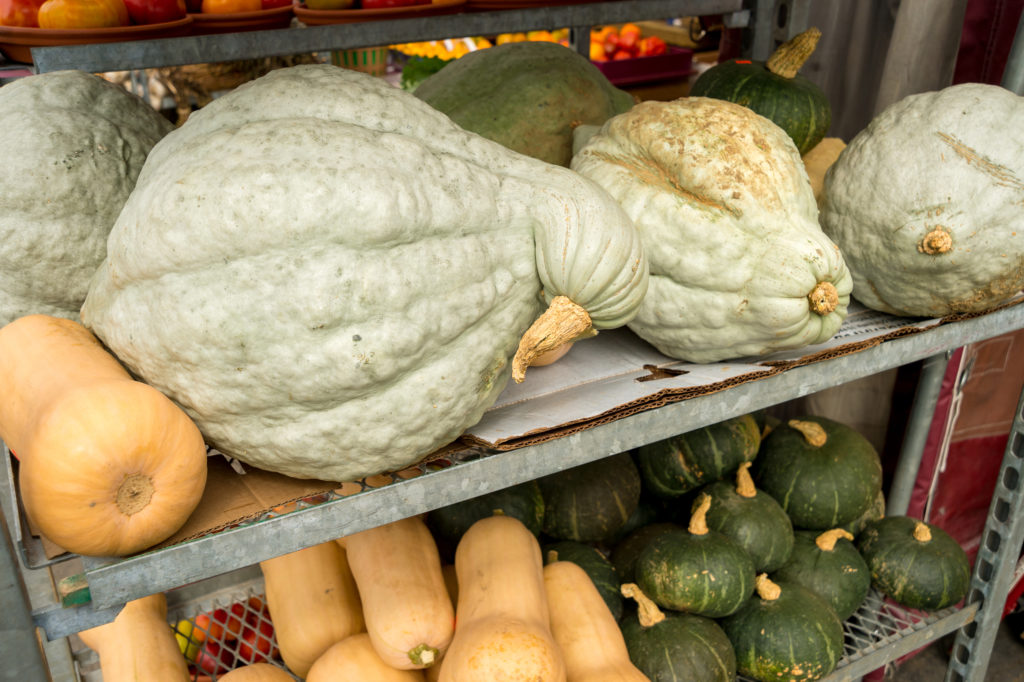 October is a busy month in the vegetable, herb, and fruit garden. Some summer crops are still ripening in the garden. Most are at harvest stage if they have not already been harvested. Check your planting calendar to make sure you harvest warm-season crops at their maturity date or soon after; don’t let them linger in the garden, flavor will be sacrificed if you do.
October is a busy month in the vegetable, herb, and fruit garden. Some summer crops are still ripening in the garden. Most are at harvest stage if they have not already been harvested. Check your planting calendar to make sure you harvest warm-season crops at their maturity date or soon after; don’t let them linger in the garden, flavor will be sacrificed if you do.
Now is the time to begin thinking and preparing for the coming frost and cold weather. How will you extend the season if your summer and fall crops are not yet ready for harvest? How will you protect cool-weather crops through fall and winter? Now is the time to construct plastic tunnels or a cold frame for winter growing. These will allow you to grow vegetables and herbs all the way to spring.
Mark your planting calendar to know when winter cool-season crops should be harvested. Add two to four weeks to maturity dates to account for shorter days and cool and cold nights. You will be growing leafy and root crops through the winter; these are easy crops to plant in succession for a continuous winter harvest.
Below are zone-by-zone suggestions for October. If you don’t have a copy of the Vegetable Garden Almanac & Planner, get one at Amazon.com. It will make the winter garden easy to understand and grow.
See the USDA Hardiness Zone Map to locate your growing zone.

Vegetables & Herbs
Zone 8-11: Keep up with the harvest. Harvest and store carrots, beets, cabbage, turnips, and celery for winter use. Dig and store late potatoes. After clearing summer crops, leave the soil open or a week or so then apply an organic slow-release fertilizer before replanting. Plant cool-weather crops in the garden or cold frame. Plant beets, broccoli, Brussels sprouts, cabbage, carrots, cress, endive, kale, leek, lettuce, mustard, onion sets, parsnips, peas, potatoes, radish, spinach, and turnips. Plant any of these crops in a plastic tunnel or cold frame for winter use. Some people find frame-grown vegetables superior in flavor to garden-grown ones. They need only occasional protection with row covers on very cold nights to survive winter temperatures. (A cold frame can be any length you want; width should allow you to work the crops without stepping in, walls should be 10 to 12 inches (25-30cm) tall, the ridge should be at least 30 inches (76cm) high to accommodate tall crops such as broccoli and Brussels sprouts. When planting remember there is less sunshine in fall and winter, layout rows accordingly. Continue to weed, water, and fertilize as needed. Pull spent plants that are not diseased and put them on compost pile; turn that part of the garden from which crops have been removed. Mulch root crops to be lest in the garden. Plant cover crop of green manure or spread aged compost in empty parts of the garden. Turn the compost pile. Take cuttings of perennial herbs to start new plants. Watch for pests and signs of disease.

Zone 7: Harvest last summer crops; harvest fall crops. Transplant young salad greens and herbs to cold frame or plastic tunnel for later harvest. Plant beets, broccoli, carrots, Swiss chard, Chinese cabbage, collards, kale, head and leaf lettuce, mustard, onion sets, parsley, radish, spinach, and turnips. Protect plants in the garden when frost is expected. Pull spent plants and compost. Turn the compost pile. Thickly mulch root crops to be left in the garden–parsnips, salsify, and Jerusalem artichoke. Remove stakes and trellises; clean and store for next year. Plant cover crop or spread compost in empty parts of the garden. See suggestions zones 8-11 and 1-6 for more tips.

Zones 1-6: Harvest fall crops as they become ready. Harvest winter squash before the first heavy frost. Harvest root crops except for parsnips, salsify, and Jerusalem artichoke which are improved by freezing; store root crops in a barrel of sand in a cool cellar or shed. Pull up tomato plants before a frost and hang them by their roots to cellar or shed rafters; they should ripen by Thanksgiving. Protect plants when frost is expected. Thickly mulch root crops to be left in the garden. Takedown stakes and trellises; clean and store for next year. Clean up crop residue without disease and add to the compost pile. The compost will be ready for spading into the vegetable garden next spring or fall. Plant cover crop or spread compost or other organic material in empty parts of the garden. If you plan to expand your garden next spring, turn the soil now and spread aged manure and lime if needed (a week apart). Lift parsley for growing indoors in winter. Mulch perennial herbs when ground freezes. The importance of fall digging or sheet composting cannot be overstated. Add manure or compost, spade deeply, and allow the rough clods of earth to stand exposed. Frost snow, sun, and rain during the winter have a beneficial action on the soil. Update crop performance records.
Also of interest:
How to Prepare a Winter Vegetable Garden
Predicting Frost in the Garden
October Garden in the Southern Hemisphere

Fruit
Zone 7-11: Harvest ripe fruit. Plant berry bushes and fruit trees. Plant strawberry runners. Remove fruiting canes of blackberries and other brambles. Tie in new canes of blackberries and brambles. Boysenberries, youngberries, and dewberries can be layered (cane tips buried 3 to 4 inches/7-10cm). Take hardwood cuttings of gooseberries and currants. Water young trees and new plants deeply. Clean up dropped fruit and leaves; compost if healthy. Remove netting when the fruit is finished to allow birds to clear pests. Place mouse guards around trunks of young trees. Put greasy bands around apple and cherry trees to catch cankerworms and inchworms. Watch for pests and signs of disease.
Zones 1-6: Harvest ripe fruit. Water young trees deeply. Fertilize berries and brambles or top-dress with compost. Clean up dropped fruit and leaves; compost if healthy. Wrap young trees to prevent sunscald. Place mouse guards around trunks of young trees. Cover strawberries if the temperature goes below 20°F. After a hard frost, thin and cut back brambles. Takedown grapevines, lay gently on the ground, and mulch after heavy frost but before ground freezes. When soil freezes, mulch trees in a ring 8 to 12 inches (20-30cm) from the trunk.
Also of interest:
Planning the Home Fruit Garden















